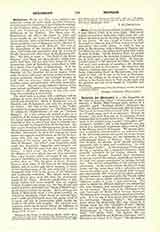

Heim, FRANCOIS JOSEPH, French historical painter, b. near Belfort, 1787; d. in Paris, 1865. This clever painter commenced work when eight years old, and gained the first prize for drawing in Strasburg before he was eleven. He was a pupil of Vincent in 1803, his people having sent him to Paris to receive the best instruction they could afford. In 1807 he won a prize at the Academy with a picture of Theseus and the Minotaur, and a travelling scholarship with which he went to Rome. On his return to Paris he carried off the gold medal at the Academy, became a full member in 1829, and a professor in 1831. He was appointed painter to the Institute of France, and exhibited over sixty portraits of members, the drawings for which are now in the Louvre. His historical and religious paintings were very attractive. The best of them, representing Jacob in Mesopotamia, was executed in 1814, and is now to be seen at Bordeaux. Two of the ceilings in the Louvre, and three of the ceilings in the Senate house in Paris are his work, and his pictures are also to be found at Versailles and Strasburg.
GEORGE CHARLES WILLIAMSON

